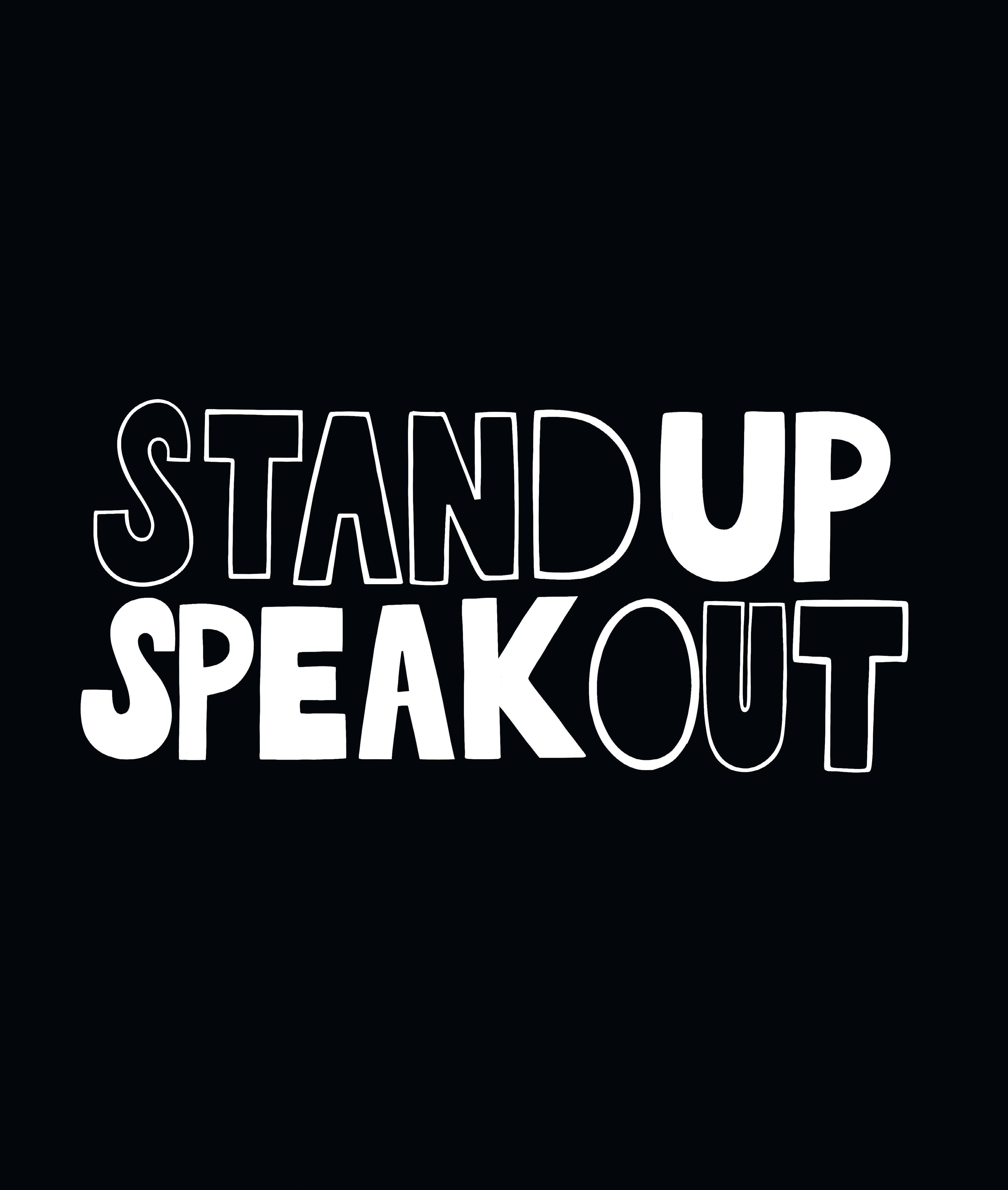advocate the















This year’s Global Media and Communications students are advocates for the truth. Using clear, concise, conversational, and, of course, compelling storytelling, their work gives a voice to the voiceless. And as more and more people seek out honest reporting, it’s important to remember the power of storytelling in shaping public opinion.
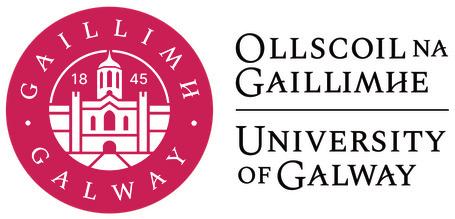
Backstage, in a little room beyond the point of what customers can see in the National Council for the Blind of Ireland (NCBI) charity shop in Galway City, Susan Flaherty and her team of volunteers are sorting and steaming clothes and chatting away happily.
It’s 11am on a Thursday in Octo ber, and the room is piled high with bags full of cast-offs and rails of clothes, all waiting to be priced up and sold.
Frontstage, the store is bustling with customers of all ages. The vin tage section – which boasts authen tic Levi jeans, 1980s puffer vests and ’90s jumpsuits – attracts a few col lege-aged students. A group of older women scrutinise a rail of blouses while a man checks out winter jumpers at the back of the shop.
Susan Flaherty is the manager of Galway’s NCBI charity shop.
With over 13 years of retail experi ence and being an avid second-hand shopper, Galway woman Susan is ex cited about the future of secondhand fashion. She wants more peo ple to be aware of the offerings available.
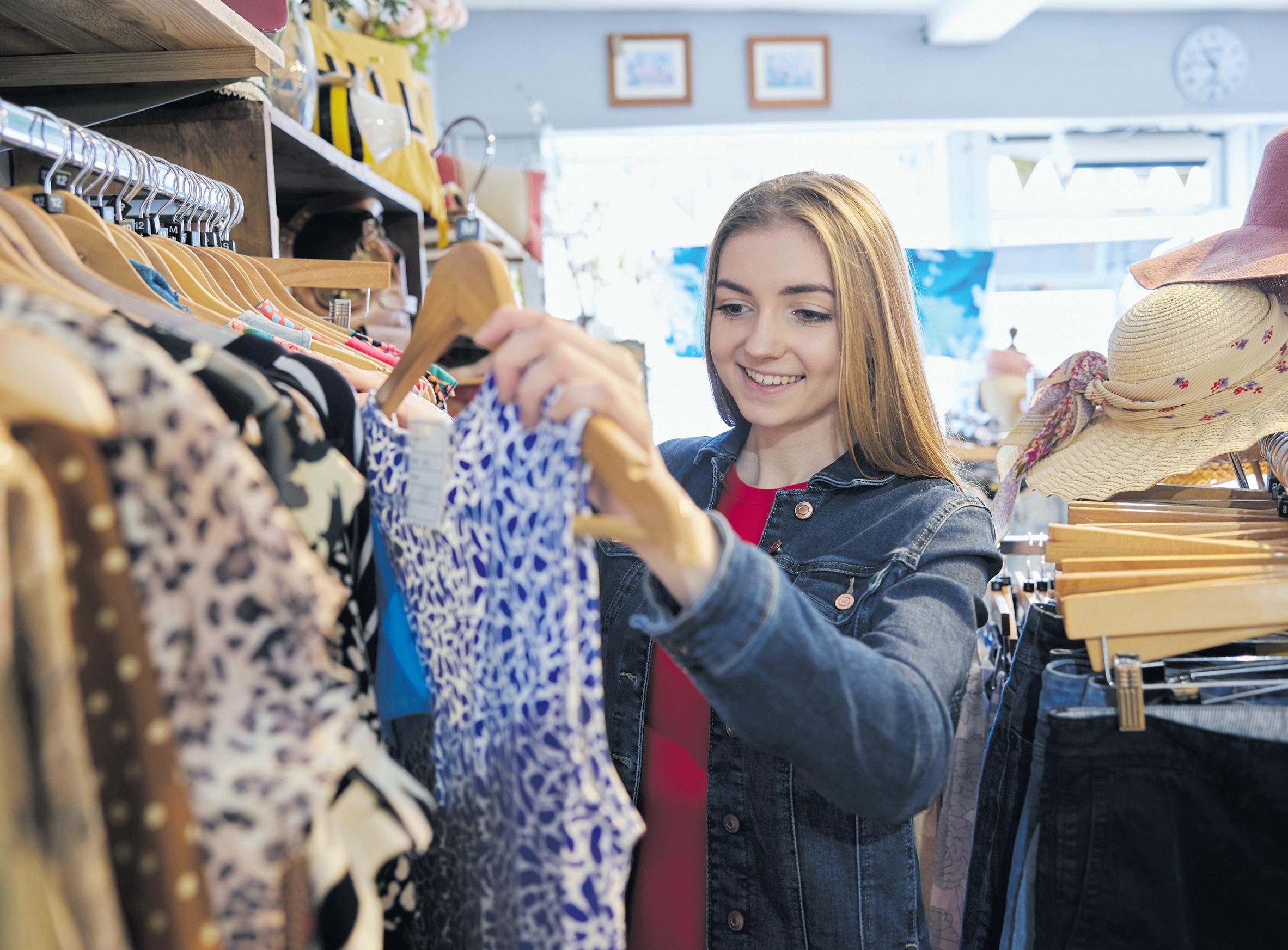
“Second-hand shops have really moved on compared to years ago,” says Susan. “It’s not just anything and everything for sale. The stan dards are higher, and the clothes’ quality is better than in the past.”
In our environmentally-conscious society, charity shops around the country report increased footfall.
According to a recent survey from NCBI, 20 per cent of respondents visit a charity shop at least once per month. While 70 per cent of respon dents shop second-hand for the bar gains available, 36 per cent enjoy the sustainability benefits that come with shopping second-hand.
Unfortunately, many of us have misconceptions about second-hand clothes and need guidance on how to shop sustainably. But the assump tion that the selection of secondhand clothes available is limited, of poor quality or outdated couldn’t be further from the truth.
“Don’t underestimate [secondhand shopping] it’s come a long way,” says Susan. “The quality and the price are there. And when you consider you’re helping a charity along with the sustainability factor, it’s a win-win,” she stresses.
The second-hand retail market is booming and provides a sustainable and affordable alternative to new fast fashion.
However, fast fashion companies re main popular, despite increased
public awareness of the problems with fast fashion.
Advertising campaigns from big brands lure us to their wares, and the enjoyment we get from buying cheap fast fashion, even to the detri ment of our wallets and our planet, keeps us trapped.
Fast fashion’s negative impacts are well-known.
According to the UN, fast fashion is responsible for 8 per cent of global carbon emissions - that’s more than international flights and maritime combined.
Numerous high-profile tragedies have highlighted worker exploitation in the industry.
Meanwhile, with the effects of the climate crisis now arriving on our doorstep, we must escape the trap of fast fashion.
And if you think shopping sustain ably means breaking the bank on be
spoke pieces, this couldn’t be further from the truth.
“We have options on the lower and higher end,” says Susan. “And for students, we offer a 10 per cent discount with a valid ID. So, it’s defi nitely accessible to everyone.”
Quality checking all donations be fore they get to the rails is key to NCBI’s success.
“We get a mix of donations and vintage dead stock that we buy our selves,” says Susan. “I’m strict on what goes out – if I wouldn’t wear the item myself, it doesn’t go on the shop floor.”
It’s this approach that has helped NCBI achieve success with a wide consumer base. By ensuring only first-rate clothes hit the shop floor, charity shops like NCBI’s Galway branch can provide a wide range of high-quality clothes for their shop pers.
Susan says that people are turning to second-hand to build a unique wardrobe – and the second-hand se lection rivals high-street offerings.
Given the current cost-of-living cri sis, investing in quality pieces that will last you for years and building a second-hand capsule wardrobe is be
coming more appealing.
“We offer a broad range of cloth ing,” says Susan. “We have speciality items like men’s suits and debs dresses, as well as the basics like blouses, skirts, tracksuit bottoms and trousers.”
“And you can use these items in different ways, like making a capsule wardrobe or getting ready for a spe cial occasion,” she says.
There is definitely a change in mind set towards consuming more con sciously, driven by awareness and concern about sustainability and overproduction of clothing.
One concern is that mainstream fast fashion brands ‘greenwash’ –that’s using misleading and false ecofriendly marketing tactics to improve their image, rather than engaging more seriously with sustainability.
If you’re interested in hunting for stand-out pieces that you won’t find anywhere else, while also helping the environment by ignoring fast fashion, check out one of the 470 Irish charity shops nationwide. For newbies, Susan recommends seek ing out vintage pieces.
“One of my biggest tips would be to look out for oversized labels and
to see where the item was made,” she says.
“Take America, for example; you don’t see ‘made in America’ labels on new clothes anymore, so you can be sure you’re getting a true, vintage piece when that’s marked on the tag”.
Clothes from eras gone by repre sent a different attitude toward fash ion. Garments were made with a life time of wear in mind, and this is still visible today.
“Some of the best finds are clothes from countries that no longer exist,” says Susan. “For example, if you see ‘made in Yugoslavia’ on the label, you know you’re getting a real vin tage one-off piece.”
The misconception that secondhand shopping is limiting couldn’t be further from the truth. With options ranging from authentic Y2K pieces to this season’s hottest trends, charity shops are an easy and affordable way to dress in a way that works for you.
Ciara Varley is a student at the University of Galway studying Climate Action, Sustainabil ity and STEM Communication, with the hope of working for non-profit science communica tion organizations in the future. Her previous background is in biotechnology. She spends her time reading about bio-integrated design, exploring second-hand shops, and petting her three cats.

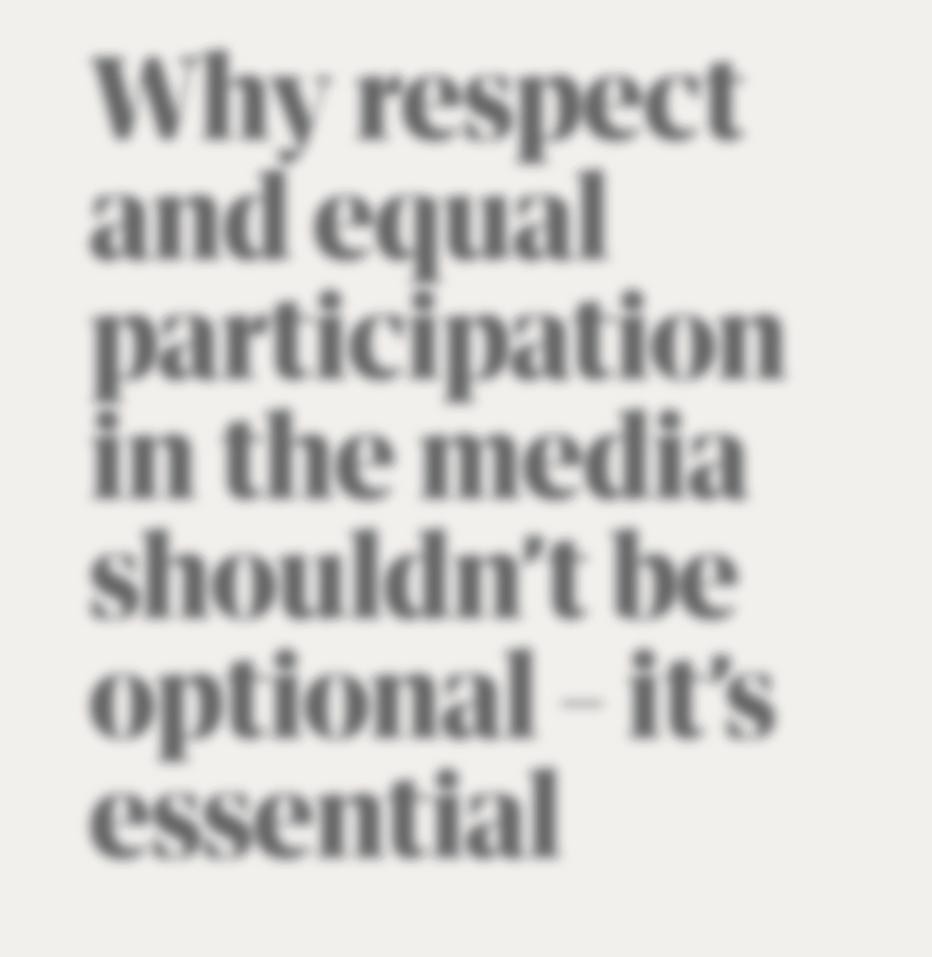
When Sky Sports GAA presenter Gráinne McEl wain took to the stage in Croke Park as mistress of ceremonies for the annual GAA awards in October 2022, she stood in a spot occupied by few women before her.
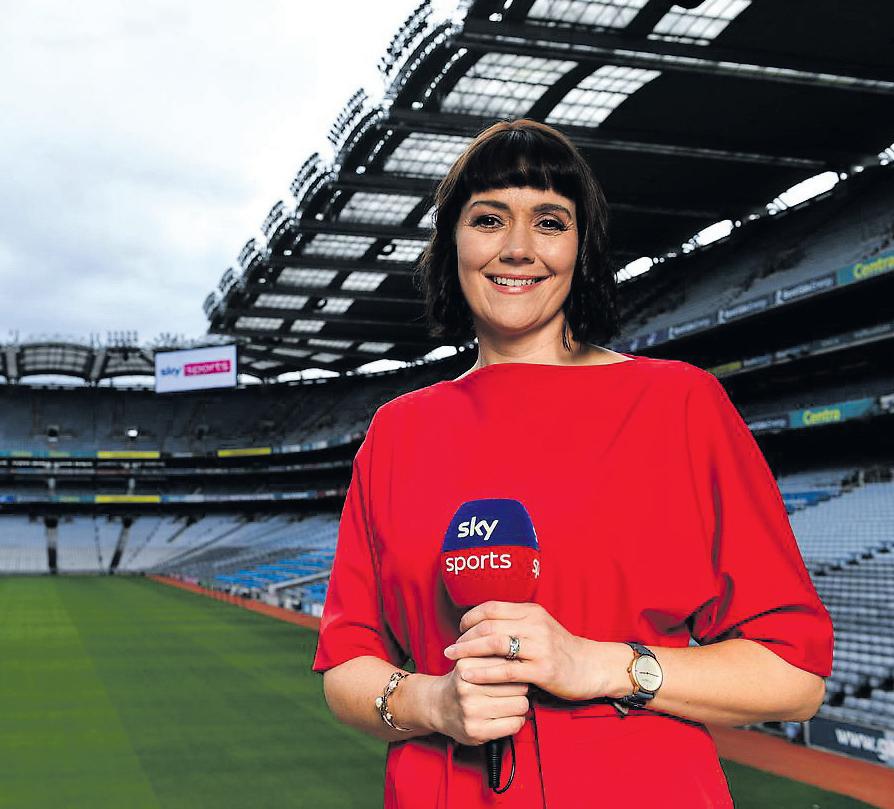
With over a decade’s experience working as a sports and entertain ment broadcaster with Sky Sports, TG4, RTÉ, BBC and Eir Sport, Gráinne’s stellar hosting skills was proof that she was there on merit –and that the idea of tokenism for a woman being involved is gone.
However, when it comes to women in prominent cultural roles, there is an apparent imbalance be tween the numbers of men and women.
That’s why Gráinne’s presence on the podium front and centre was a reminder of why the visibility of women is essential and why tackling the underrepresentation of women in media is so important.
“It’s important to know who you are as a person,” says Gráinne. “You need to have a very strong sense of self when you’re working as a pre senter in the media and not to be persuaded by what people think of you.
“Know who you are and what you stand for.”
Gráinne took an interest in media work while teaching Irish and His tory as a secondary school teacher in Dublin. While reading an Irish news paper, she noticed an advertisement for a role in sports media and de cided to go for it.
A native of Monaghan, Gráinne is a fluent Irish speaker. As well as being the current anchor for Sky Sports GAA coverage, she has worked as a reporter on RTÉ’s flagship GAA high lights show, The Sunday Game, and as a sideline reporter for RTÉ’s live GAA and Athletics coverage.
Outside of sports, Gráinne is steeped in traditional Irish music, having participated in Fleadh Cheoil na hÉireann and Scór competitions from an early age reaching and win ning All-Ireland medals.
Gráinne lives in the Conamara Gaeltacht with her husband and three children.
Women in the media are held to very high standards routed in tradi tional views of gender roles. They
are expected to present themselves in a certain way and are criticised by tabloids and online media for going against the norm.
It is difficult to read insensitive comments about yourself, which is why Gráinne believes having thick skin is vital.
As a media-savvy professional, Gráinne knows that if we want to break negative stereotypes of women off-screen, we’ll also need to tackle them on-screen. Female pre senters, like Gráinne, can inspire ambition for more women entering the media, but only if the many bar
riers confronting them are removed.
Tabloid media outlets have long depicted misogynistic undertones. Insensitive headlines about mental health and body issues can harm how we view ourselves and increase negative stigmatisation.
We’ve seen women like Britney Spears, Sinead O’Connor, and Meghan Markle exploited for their personal struggles. Their issues were used for financial gain and were sometimes laughed at by certain publications.
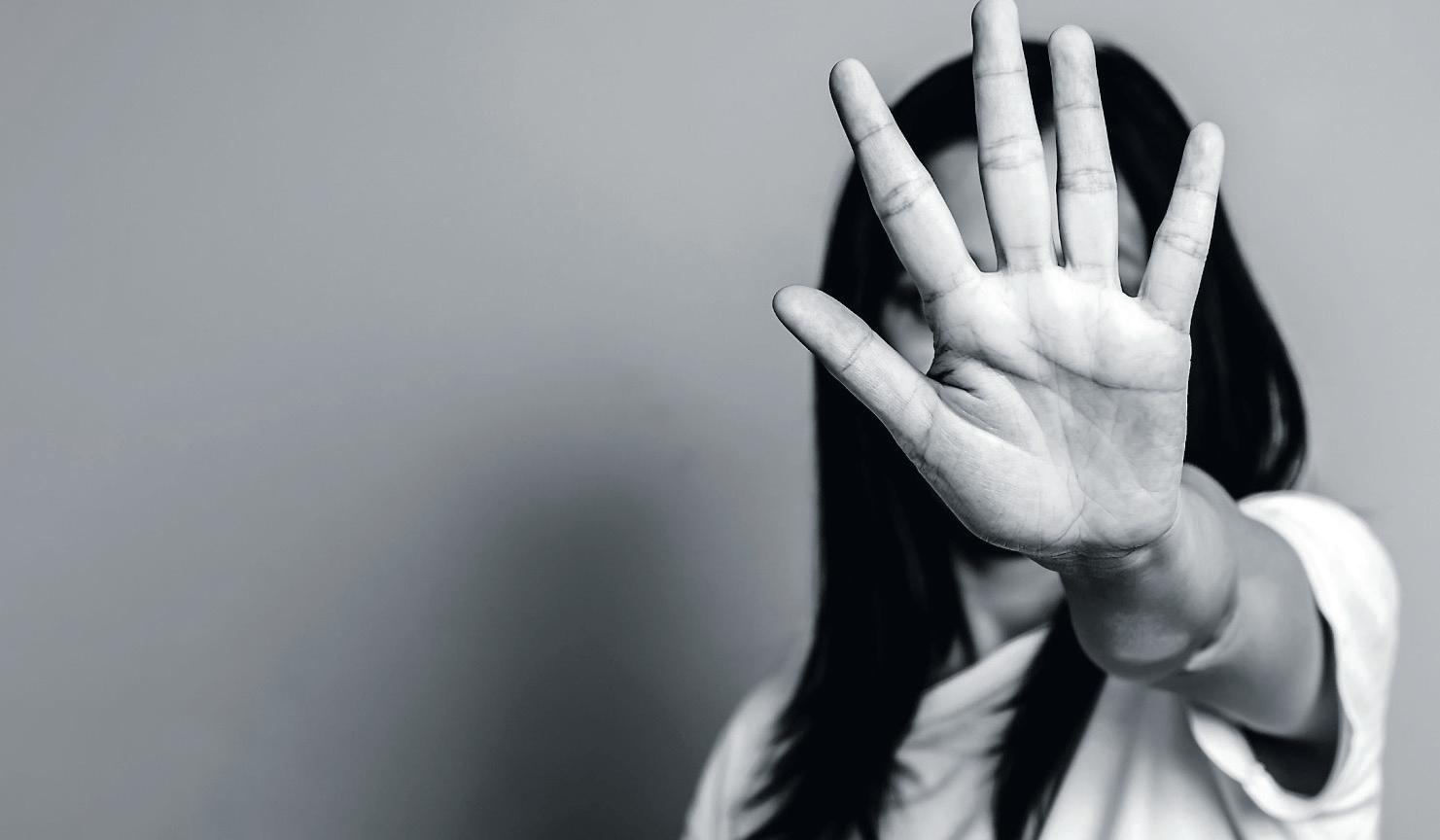
Gráinne admits that as a presenter in sports media, she hasn’t been af fected by tabloid headlines, but she has been a victim of social media backlash.
Online comments on platforms such as Twitter can be hurtful, but Gráinne reiterated how she values the opinions of her loved ones the most.
“Criticism can hurt, especially on social media,” says Gráinne. “Re member who’s important to you be cause the people who are important to you are the ones whose advice and opinions you value the most.”
While the significance of tabloid media has declined since the 2000s, online platforms such as Twitter have been used to spread misinfor mation and hurtful comments.
“When people write or say hurtful things, I often wonder what their agenda is?” says Gráinne. “They’re often negative and don’t view you as a person.
“Being a person in the media, you are open to criticism from other peo ple, but some take it too far. It’s as if a celebrity is something to sell a headline rather than a real human.”
Gráinne has sympathy for women in music and reality television, as they are heavily criticised. “While I am in a different industry to them,
some of the hate they receive is very unfair,” she says.
For example, Taylor Swift was a victim of sexist media and headlines with misogynistic undertones. When Taylor was ‘cancelled’ by the inter net in 2016, she went completely off the grid, taking time to work on her self and her music.
Despite the negative backlash she faced online, Taylor prioritised her health and personal life and has since returned stronger than ever with her recent releases.
Gráinne emphasises the impor tance of staying humble and grounded to combat the negative opinions of others.
Meanwhile, Gráinne is happy to continue being the face of Sky Sport’s GAA coverage, and there’s no doubt that the Monaghan native’s ca reer and passion have made her a role model to young people with big aspirations.
“Confidence is vital,” says Grainne. “Knowing who you are as a person and staying true to your val ues.”
1, Matcha lattes, reading and 5 Seconds of Summer.
Every day, when Mary Finan wakes up, her mobility depends on a battery-operated elec tric wheelchair. Spon taneity is rarely an option for Mary. She must think about so many small things before going anywhere.
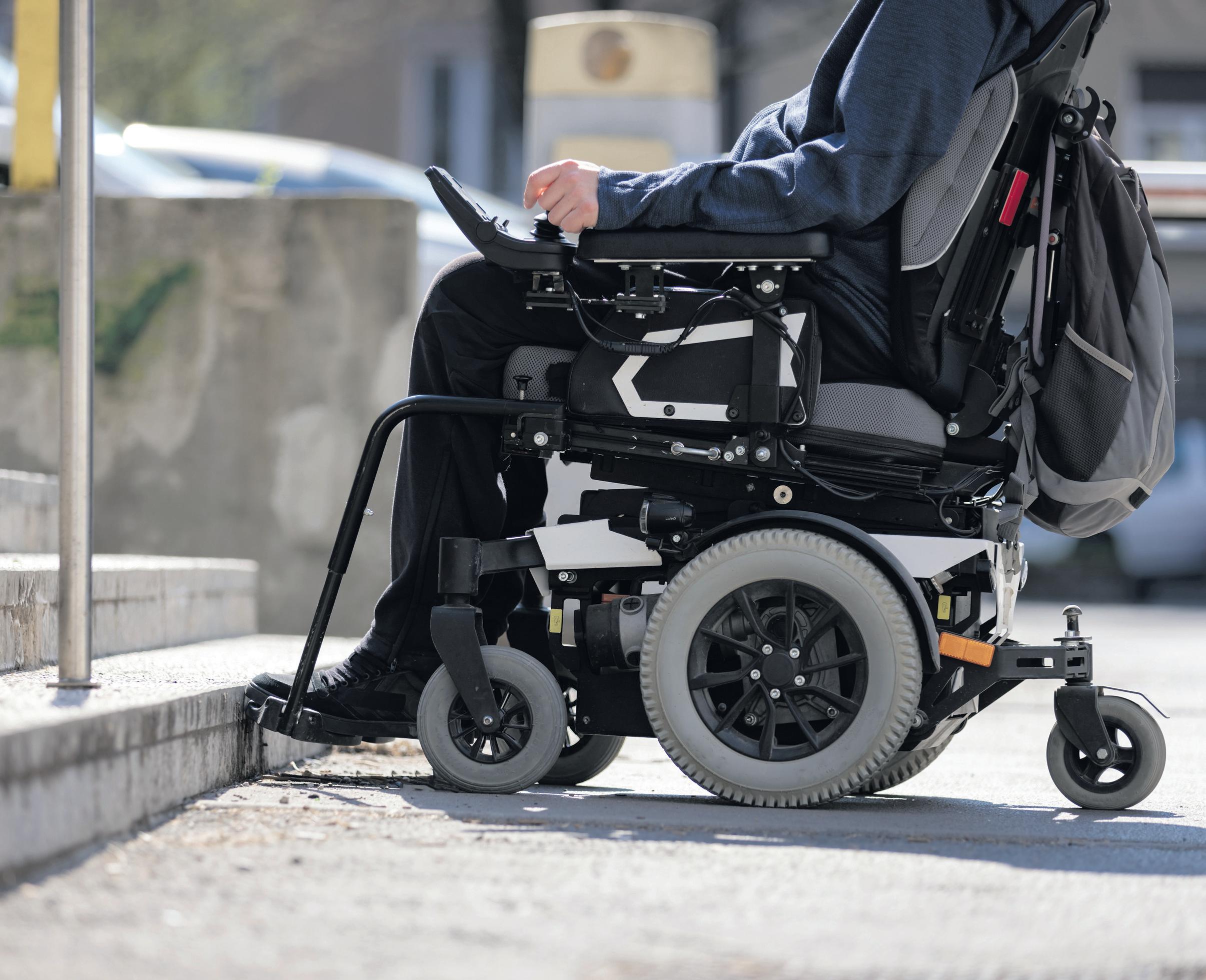
Mary is studying Irish language media at the University of Galway. For her, the most frustrating obsta cles are the everyday ones. Living with a disability can make it difficult to achieve things that non-disabled people take for granted.
One of the defining issues that Mary shares with people with a dis ability living in Galway City is access. There are shops she can’t get into be cause of large steps or raised door frames. Sometimes the issue is kerb ing that is nowhere near low enough, frequently obstructed by cars.
Mary would love to have more control of her life.
But what bothers her most is that many places her friends like to go aren’t open to her.
“Without a good accessible city, people with disabilities cannot live full and active lives,” says Mary, who is originally from England.
Mary sometimes considers that the failure to address these prob lems speaks to a deeply embedded cultural attitude wheelchair users don’t want a social life.
In Mary’s experience of living in Galway City, the most basic accessi bility needs of disabled people are often neglected.
In 2004, Mary was diagnosed with myalgia encephalomyelitis, a neurological disorder affecting the central nervous system – more com monly known as chronic fatigue syndrome (ME/CFS).
During the Covid-19 outbreak, she contracted the virus, which further deteriorated her health and left her mobility confined to having to use a wheelchair to get anywhere.
“In trying to accomplish what I want or need to do, my condition may deteriorate further,” says Mary.
Mary remembers when she was healthy and did not need a wheelchair to get about life. To her, “life was good, and I was in control. I do not feel that way anymore”, she says.
Researchers still do not know what causes it or how to treat it yet; Mary is hopeful for a break in tech nological advancement by students at the University of Galway.
“With the University of Galway fa mously known as a place for innova tive research, I hope there will be
research to find a solution,” says Mary.
Mary is using her voice to advocate for proper accessibility for people with disabilities in the university and the county.
Mary’s commitment to seeing a change led her to join the support group ME Ireland. The organisation caters to the needs of people with disabilities and gives support on how to cope and advocate for improve ments regarding the day-to-day ex periences of disabled people.
At a local level, Galway County 2022-2028 development plans de scribe people living with disabilities to “include those who have chronic physical, mental, intellectual, or sen sory impairments that, when com bined with other obstacles, may pre vent them from fully and equally participating in society”.
Galway City Council has stated that it will “promote Lifetime Hous ing and Universal Design in all new
constructions”.
This kind of housing will enable the future adaptation of units as de mands change throughout the occu pant’s or owner’s life. It is a proac tive move to address the housing needs of disabled, older, and diverse families and raise the long-term value and sustainability of buildings.
The Council’s policy goal is to ad vance universal design to ensure that all public facilities, including build ings, parks, and recreational places, are inclusive and accessible to those with disabilities. Another notable stride towards greater accessibility for individuals with disabilities is by Gold Star, which in partnership with
Galway City started a programme known as ‘Access Together Galway’. The programme is supported by the United Nations (UN) Convention on the Rights of Persons with Disabili ties (UNCRPD), which Ireland adopted in 2018.
At a global level, the UN's Sustain able Development Goals (SDGs) are a universal call to action to reduce in equality by promoting the social, economic and political inclusion of all, including persons with disabili ties.
Meanwhile, Mary is working with the University of Galway to improve accessibility throughout the campus.
Mary is determined to draw the at tention of the university and local government to the problems faced by those living with disabilities. Re cently, and with help from a fellow student, Mary made a video about how difficult it is for her to get through doors and steep curbs on the university’s campus.
The University of Galway recently
adopted the Jam card to raise aware ness of and make people with dis abilities more visible on campus.
“Accessing places is quite terri ble,” says Mary. “Most of the doors at the college are heavy. Those doors weigh about 45-75 kilograms; when I pull the door to make space for my chair, it pushes back against me.
“No matter how hard I try, often I can’t open those heavy doors, so sometimes I have to forego classes or social events and stay indoors.”
The solution she proposes will be to put a push button at the doors; however, according to correspon dence from the college, “the archi tectural design and cost for a button is quite expensive”.
Mary says that although much is being done to provide a good stan dard of living in terms of “income and social welfare” for people with disabilities in Galway, accessibility remains “another case”.
Bitwul Dashe is a Global media and communications student at the University of Galway. She loves reading, writing, taking pictures and travelling the world. She believes you can do anything you set your heart to. She loves warm baths and hugs.
Lack of accessibility has long term impact
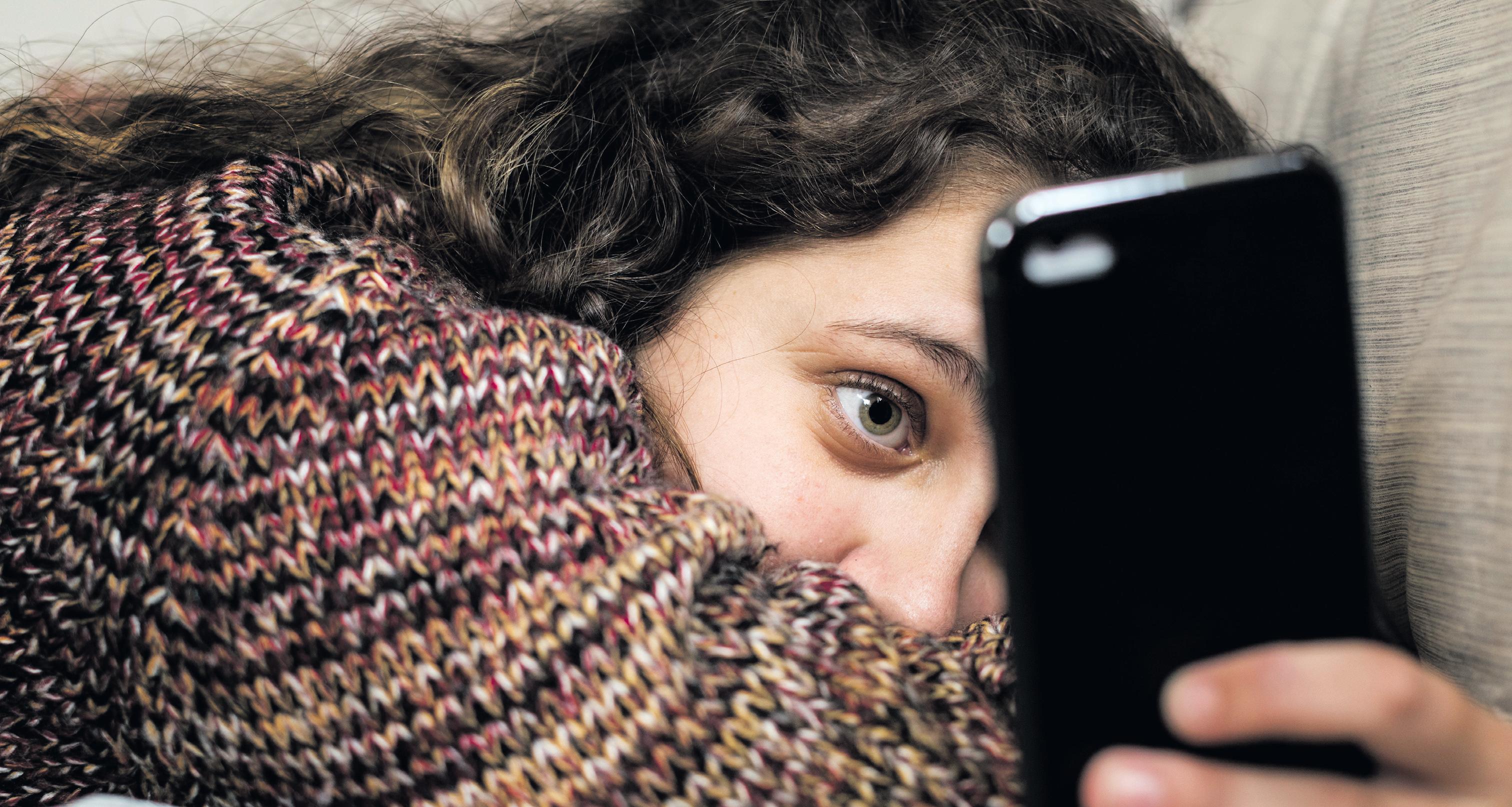 BY MOLLY McSHANE
BY MOLLY McSHANE
If you’re like me, as soon as your alarm goes off in the morning, you groggily grope for your mobile phone to turn the electronic ringtone off, but you can’t help your self starting the infinite scroll that keeps going like a bottomless pit.
Why do we care so much about the mindless drivel? Why do we compare ourselves to what we see on someone else’s Instagram page? Sometimes it feels like an insatiable checking for likes, comments and forms of approval. We’re constantly hungry for further validation –screen time is as addictive as junk food.
There’s no doubt that social media can be overwhelming and a bit of a battlefield to navigate. Still, I’ve dis covered from talking via Zoom to Dr Eoin Whelan, a senior lecturer in Business Information Systems at the University of Galway, that there are both negatives and positives when it comes to social media.
“We’ve done some research on students, particularly students at the University of Galway, and their use of social media,” says Eoin. “We found that it can have a negative im pact on your well-being and student performance as well.”
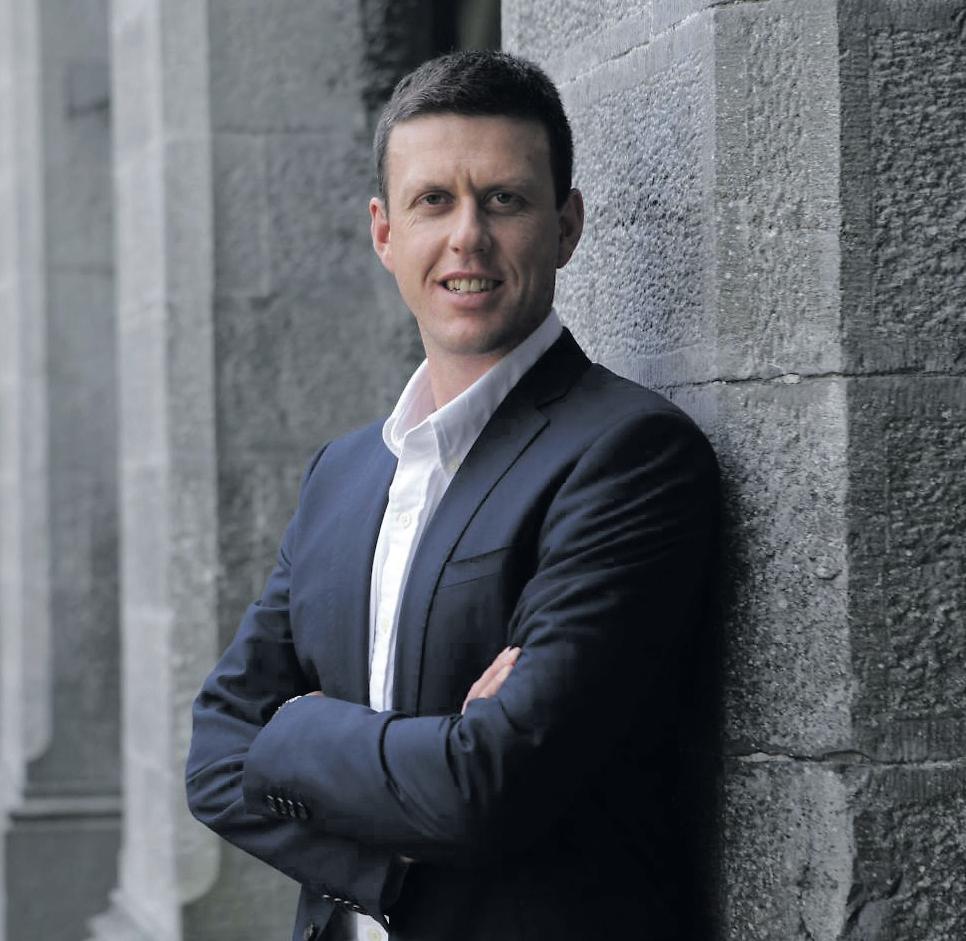
The adverse effects on students come from the stresses that social media can bring. For example, Eoin says if you’re on TikTok or Instagram and you feel like you are giving too much support to your friends, doing so can be a stressor.
This stress affects students’ work habits because it weakens their selfcontrol. Eoin explains that this weak ened self-control can lead to not
properly studying, and handing in assignments late, for example. “To be good at anything, you need selfcontrol,” says Eoin.
The content on social media can have different effects on different people when it comes to negativity on the internet, according to Eoin.
“It depends on a person’s disposi tion,” says Eoin. “If you’re con stantly looking up to these people [Influencers] and comparing your self to them, that will have a negative impact. Whereas for others, it wouldn’t negatively impact them be cause they realise it’s a fake world.”

It’s important to disconnect and re alise that not everything you see on

line is real. Eoin says it’s easy to get caught up in what you see online, but sometimes you must realise that everyone is trying to portray them selves in the best light.
“You have to look past all the fil tered images and idealistic lives to know that people do not post their entire life online, just the parts that make them look good,” he says.
There are no filters in everyday life, including video conferences, the latest study Eoin is conducting.
Life has completely adjusted after the COVID-19 pandemic. According to Squaretalk, in 2022, 16 per cent of companies worldwide are fully re mote, while 40 per cent of compa nies worldwide have implemented a hybrid style of working.
Eoin elaborates on his research by describing the interaction he and I
were having via Zoom.
“I’m looking at the screen here; I can see myself… over your image,” he says. “And so I might become more conscious of myself and my ap pearance.
“And there have been studies [that] have shown that this has more of an impact for females. Women tend to be more concerned about their appearance.”
This is a challenge in a workplace environment, according to Eoin, es pecially if you are worried about how people perceive you. For many, it isn’t easy to stay focused on the task at hand.
However, Eoin has seen some positives from social media in the workplace.
Eoin explains that for young people and professionals, social media is a great place to find inspiration. He discovered that when professionals are active on social media, it can help them be more innovative.
“Social media can provide more information they normally wouldn’t have access to, which allows people to be more creative,” says Eoin.
“This sense of creativity can help you in your career and potentially help students discover their pas sions.”
Think of social media as food for many people; young people seem ingly can’t live without TikTok or In stagram. And in the same way, we can’t live without food. Eoin says, “use it sustainably”.
Eoin compares overexposing our selves to the internet to eating Mc Donalds for every meal; it’s not sus tainable.
“Let’s think about the food we eat,” he says.
“The portions you get throughout the day are important,” he contin ues. “If you gorge on a big meal first
thing in the morning, you’re not going to feel great.
“Same way, if you overindulge on social media first thing in the morn ing, that’s not going to be good.”
And many others share Eoin’s opinions and conclusions.
Steven Pinker, a Harvard scientist, describes music as “auditory cheese cake”.
He concludes that, yes, music is enjoyable and increases our levels of serotonin.
However, we do not need music or cheesecake to survive. Nor do we need McDonalds or social media –even though both are enjoyable.
“There is a difference between using technology to educate our selves, connect with friends, and find people who share the same hob bies as you,” says Eoin.
“Compared to following influ encer culture, celebrity culture and spending your downtime scrolling,” he adds.
It’s easy to get caught up in all the negativity surrounding social media. Maybe if we follow Eoin’s advice and consume media in a sustainable way, we can be lucky enough for lightning to strike and be inspired by the next big thing.
We can use social platforms to inspireMolly McShane is a Master's student studying global media and communications at the University of Galway. She received her Bachelor's in media and culture with a minor in journalism at West Chester University of Pennsylvaia. When Molly's not studying she enjoys drinking coffee and attending concerts.
In 1963, on his presidential visit to Ireland, John F. Kennedy said, “most coun tries send out oil or iron, steel or gold, or some other crop, but Ireland has had only one export, and that is its people”.
JFK’s telling observation was al most sixty years ago, but it still ap plies today.
Job insecurity, the worst cost of liv ing crisis for decades, and rising rents mean ‘the class of 2022’ faces difficult decisions – not that things have been any easier for young adults for a long while, however.
Emigration is something Irish peo ple know all too well. From hugging your family goodbye in Dublin Air port’s Terminal 2 in Dublin airport to feeling the butterflies in your stom ach as you are excited for what’s to come.

For many, it’s also extremely scary as you’re starting a new chapter in your life in a place you don’t know, without your mammy to make you hot water bottles and cups of tea. Most notions about emigrating be
come a reality after college, when people are in their mid-twenties, but that isn’t the case for everyone. Emi gration is happening all over Ireland to people, in all stages of life.
Sarah Holden, from Kilkenny, re cently moved to Brussels for the sec ond time in her life for career pur poses. Sarah works as the First Secretary of Permanent Representa tion of Ireland to the EU.
“We knew that moving to another country would be easier the younger the kids were,” says Sarah. “Luckily, Brussels has lots of facilities and sup port for families outside of Belgium in terms of education.”
Being away from home can be ex tremely difficult when you are close to your family. But Sarah says she would not change her decision for anything.
“It’s hard at times,” says Sarah. “But when you’re home, you value the time with your family so much.”
According to Sarah, there is a mis conception that people are forced to leave Ireland to find work elsewhere when, for many, they emigrate to find a better quality of life.
According to research, 72 per cent of emigrants were working before they emigrated, with only 14% unem ployed.
In Sarah’s case, the move came with its difficulties, however. Not having the support of your family when trying to focus on your chil dren and your career was challeng ing.
Sarah counts herself lucky to live in an area that has support for Irish families.
Her son, Sam, is in his first year of school, and he is being provided with Irish classes with other Irish children so that he won’t be behind his peers when they move back to Ireland.
“My career has always been very important to me, and I want my chil dren to grow up with the mindset that they can do whatever they want in life, no matter the circum stances,” says Sarah.
The concept of emigration is something that Irish people expect to encounter at some point in their lives. The Covid-19 pandemic brought a new onslaught of ‘genera tion emigration’, similar to the after math of the economic crash in 2008.
Approximately ten million people have emigrated from the island of
Ireland since 1800. No other country in Europe has been so affected by mass emigration.
Everyone who emigrates has their own story, a different reason to leave Ireland. Be it for their career, the chance to see the world, or to find their path in life.
For some people, like Sarah, their career is something they are incredi bly proud of and when given the op portunity to further that, emigrating may be a natural progression.
The Irish Times conducted an ex tensive essay in 2016 on Irish emi grants. This study revealed that 84 per cent of people who emigrated to mainland Europe did so to relocate and did not feel forced.
“Emigration affects everyone, even if you have a life in Ireland and feel settled; if it doesn’t feel right, then it’s never too late to find the right place for you”, says Sarah.
Also, the fact that it is not required to have a visa to move abroad in any of the 27 EU countries is undoubt edly an attractive concept. Being able to freely move across Europe without the stress and hassle of a
visa was a massive incentive for Sarah.
Another misconception is that em igration something only considered by younger generations. Research concludes that while two-thirds of emigrants fall into the 25 to 34 age group, 19 per cent of emigrants are between the ages of 35 and 44.
Emigration may be part of Irish culture, but it’s often a positive expe rience, too. In fact, 84 per cent of people are happier in their jobs com pared to the career they had previ ously in Ireland.
Sarah Holden is an excellent ex ample of a woman who has been able to raise a family without taking the focus off her career. And she’s not alone; 72 per cent of emigrants living in mainland Europe say they are happier since they moved abroad.
“It goes without saying, though, that support is needed, says Sarah. “Without support from the people around you, it can make it much more difficult.”
Áine Ní Oldáin – Áine recently graduated from NUIG with a BA Comhonóracha le Gaeilge. She is a very serious history enthusiast, a GAA try-hard, and a relentless chatterbox.
Last Saturday, I could hardly contain my "oohs" and "ahhs" as I followed every jump, spin and dance sequence while watch ing aspiring figure skaters train for the upcoming sea son at their headquarters on Centre Park Rd, Ballintemple.
One skater zoomed past me as though she was flying. Another skater jumped high into the air and, upon landing, immediately transi tioned into a rapid spin, accelerating until she was just a blur.
Bang – my trance was interrupted when a skater mistimed her landing and fell on her back, her head only just missing the ground. She wasn't the slightest upset and instantly sprang back up and continued her routine.
Seeing my surprise, the skater's coach Kelly Dwyre said, "I always tell my skaters that it does not matter if you fall ten times; it matters that you get up eleven times". Kelly is one of three founding members who estab lished the club in 2011.
The sound of Vivaldi began to flood the gym as the junior skaters were escorted off the floor suppos edly a crucial element in figure skat ing – ice.
Despite numerous attempts over the years to build and maintain a perma nent ice rink in the South of Ireland, not a single rink has survived. In comparison, the UK has over 100 rinks including a thriving rink in Belfast – the Dundonald interna tional Ice Bowl.
This Olympic-sized rink opened in 1986 and is both owned and oper ated by the Castlereagh Borough Council.
Since it’s opening, the rink has re ceived a £2 million grant from the EU to develop the centre. This shows that the demand for a rink is there –so why is there no rink in the south of Ireland?
Rather than dwelling on this ques tion, the Cork Figure Skating Associ ation has turned to inline figure skat ing. "I was a competitive pair skater in Canada, and when I moved to Ire land, it was upsetting to witness the lack of figure skating facilities avail able," said Kelly.

"Of course, the temporary Christ mas ice rinks are great, but there's only so much you can learn when you only have access to the ice for eight weeks.”
Kelly blames the energy crisis and lack of funding as possible reasons for Ireland not having a permanent
Sabrina Vassia, who is originally from Italy and is a member of Kelly’s training crew, also praised the adapt ability of inline skating when com pared to ice skating.
"I believe that inline skating will replace ice skating in the future as it is more environmentally friendly,” said Sabrina.
"During the Covid pandemic, many ice rinks back home in Italy had to close, and it was a nightmare for the skaters, but with inline skat ing, all you need is a flat surface –you can skate anywhere.”
The Cork skaters use rockered boots with wheels to emulate an iceskating boot, performing all the same elements on a gym floor.
Inline skating tries to emulate ice skating in every way, which allows skaters to have an authentic figure skating experience.
So, I decided to give it a shot.
After some encouraging words from Kelly and Sabrina, I agreed to find out what inline skating was likefirst-hand.
After lacing up the boots, putting on the hand pads, and wobbling my way from the changing rooms to the gym floor, I was met with an encour aging smile from Kelly.
"You need to keep your arms out, and your knees should be in line with your toes," said Kelly.
After 10 minutes of wobbling and
I was starting to get the hang of it. I couldn't help but look at the skaters on my right with a new admiration for how easy they make it look.
From axel jumps to toe loops, from camel spins to sit spins – they can do it all. The display of trophies on the shelves behind them proves their dedication to the sport of figure skating – ice or no ice.

Zara, a competitive skater at the club, said, "although I would love a permanent rink so that we would be able to qualify for bigger competi tions such as the Olympics, many of us now prefer inline skating to ice skating".
Zara, who has just turned 17, has been skating at the club since she was seven and regularly travels abroad for competitions.
"We've competed in Ukraine and Italy and planned to travel to Poland, but the competition was cancelled because of the pandemic," said Zara.
Jenny, another coach at the club, said she watched the movie "The Ice Princess" as a child, and since then, skating has been her passion.
"I train six days a week, whether ballet class to work on choreogra phy, strength and conditioning, or my routines, I'm always at the gym –
Jenny also expressed her frustra tion at the lack of ice available in Ire land.
"I think it's a disgrace that a coun try like Ireland, which is advanced in so many ways, can't manage to keep one ice rink running all year round.”
Jenny highlighted that the lack of ice prevents sports such as curling and ice hockey from growing in Ire land.
At the end of the training session, I couldn't help but feel that there was a silver lining to the lack of ice in Ire land – the rise of inline skating.
Laoise, a fourteen-year-old skater, told me she was never interested in ice skating – only inline skating.

"I started here when I was six, and I have always loved that I can skate anywhere, at any time,” she said.
Laoise suggested that if a perma nent rink is unrealistic, the focus should be on growing inline skating instead.
"I know everyone loves the thrill of skating on ice, but I believe inline skating is just as enjoyable if you just give it a shot,” said Laoise.
Maria McCarthy is currently pursuing a Masters in Global Media and Communica tions at the University of Galway. Maria has recently graduated from University College Cork, where she received a Bachelor of Law. She loves playing the violin and piano and is currently attempting to learn the accordion.
Among the youth of Ireland, something is stirring. Some call it disenfranchisement, and some call it apa thy. Some see a prob lem that may be less simple to label but much easier to try and resolve.
My pal Erin McGinnity, a 21-yearold hotel waitress and bartender, told me recently that she didn’t know what political parties want to do in government or how to access more information about how deci sions are made that affect our daily lives.
For Erin, and many others like her, she feels entirely lost when voic ing her concerns – and that train of thought typically ends with young citizens forgoing their right to vote for fear of making the ‘wrong’ deci sion in the voting booth.
Young people should have more opportunities to discuss the policy areas where they have a critical per spective.
Erin’s widely held viewpoint cer tainly gave me cause for concern. Politics doesn’t appear to be a twoway street, as the opinions and con cerns of young people don’t seem to be listened to by elected representa tives.
That’s why I sat down with the youngest ever elected Galway County Councillor, Albert Dolan, to discuss why the perception is that young people have no particular in

terest to participate in voting.
“Young people want to be able to discuss policy, or what they are pas sionate about,” says Cllr Dolan.
The only one of 39 sitting repre sentatives on Prospect Hill under the age of thirty, Cllr Dolan (24), feels that his age gives him a fresher per spective on youth issues and con cerns than his colleagues.
In his opinion, the real axis of youth disengagement is between na tional and local politics.
The feeling that politicians and politics are out of touch with young people is unsurprising given the age demographics within Irish politics.
The average age in the 33rd Dáil is 48.5. Only three TDs are in their 20s, one of whom was elected aged 29, making up just 2 per cent of all rep resentatives.
Globally, there are no exceptions to this trend. Research on the sub ject, carried out by the United Na tions (UN) revealed that 51 per cent of the world’s population is under 30, but only 2 per cent are members of governments.
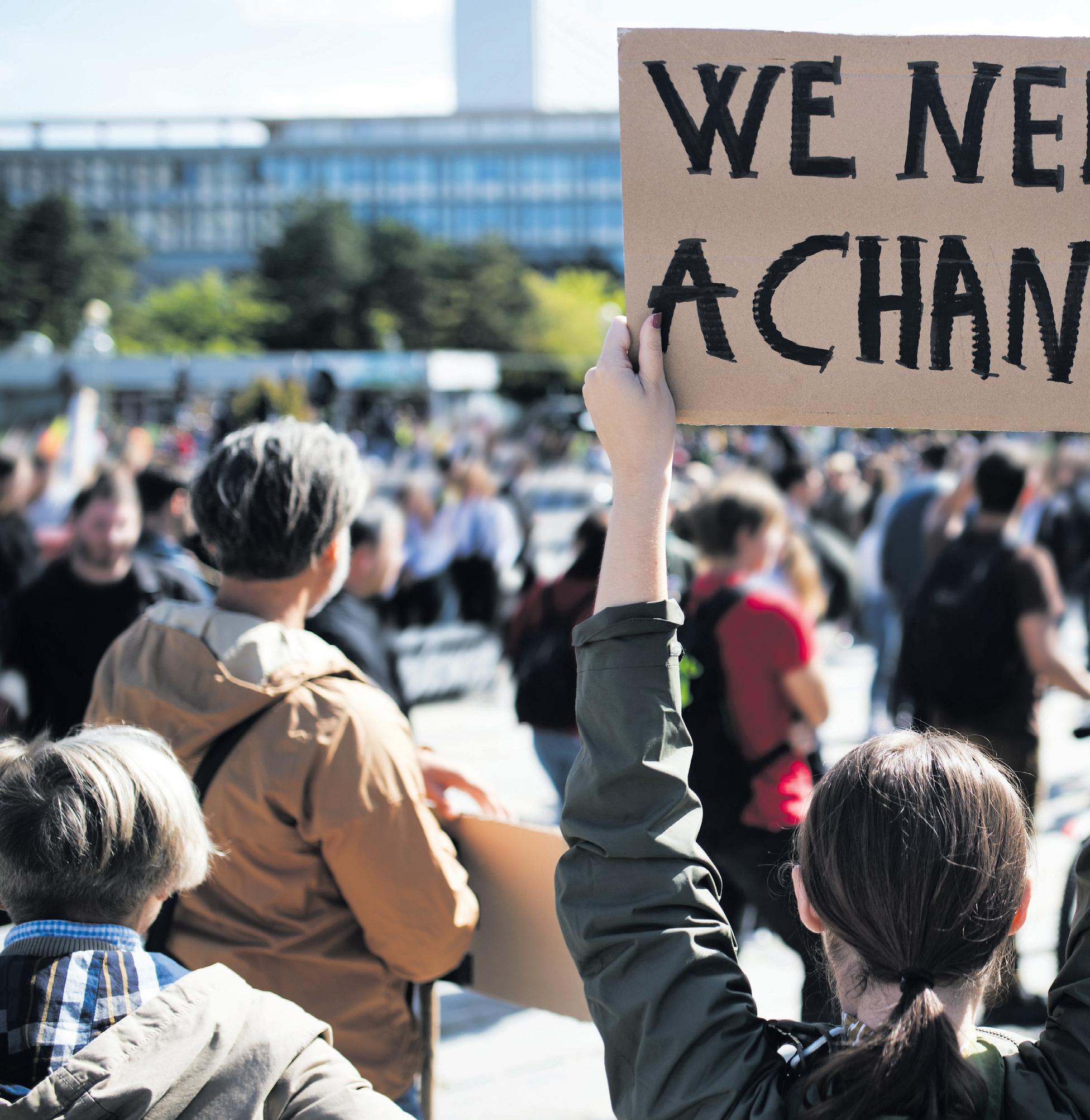
“[Young people] are very concerned with national issues, so I believe they will engage with a national election,” says Cllr Dolan. “And I saw that in 2020,” he adds.
“But I feel that on a local level, the engagement is rather poor because a lot of young people from the ages of 18 to 22 are gone to college, and they’re not too aware of what the is
sues might be in a local area, or how they can get involved.”
But still, voters in Ireland, when electing national-level representa tives, often end up focused on local concerns, casting their vote for can didates whose platform is founded on advocacy for their constituents.
In terms of political engagement for the tech-savvy generation, online platforms provide a vast and accessi ble supply of information for voters. And yet, younger members of the electorate are no better informed.
Citizens Information, for example, provides everything the individual may need to know about their rights as an Irish citizen and does so in straightforward language. But the site is fundamentally uninteresting.
Granted, a site of its kind needs to be simple and non-partisan to share its information in an all-encompass ing way. However, reading up on your rights as an Irish citizen should n’t feel like a chore.
What’s the solution to getting young voters engaged with important infor mation often considered ‘boring’ concerning how it’s presented?
“Video content is the way to go,” says Cllr Dolan. “The only way you’ll get representative democracy is by opening it up to the masses.”
Bite-sized video content, such as that shared on Instagram or TikTok, is one of the most popular media types among young adults.
If created in a way that does not
Cllr Dolan believes that politi cians should ensure that they dis cuss issues relating to young people in ways that digitally-inclined citi zens can identify with.
“The one thing I hope is that poli tics isn’t seen as a closed shop, that it’s never seen as confined to the elites of society,” says Cllr Dolan.
A cause for optimism
To give credit where credit is due, there are changes afoot.
speak down to or baby the audience, that attaches the language of internet culture to the business of citizenship, then this cohort may find themselves engaging with their rights as citizens like never before.
Contrast this concept of videobased content with the written con tent on the Citizen’s Information site. There is no visual aspect to en gage the audience, no break in the wall of text.
No matter their age demo graphic, the contemporary reader will likely get fatigued with the site quickly.
Though the information is writ ten in an accessible way on an ac cessible site, its delivery is not en gaging enough to feel accessible.
Young voters need to feel seen and that their voices are being lis tened to. It’s easy to say that this would happen if they arrived en masse at their polling stations at the next election – but if they feel that access to the information they need is limited, this isn’t likely to occur.
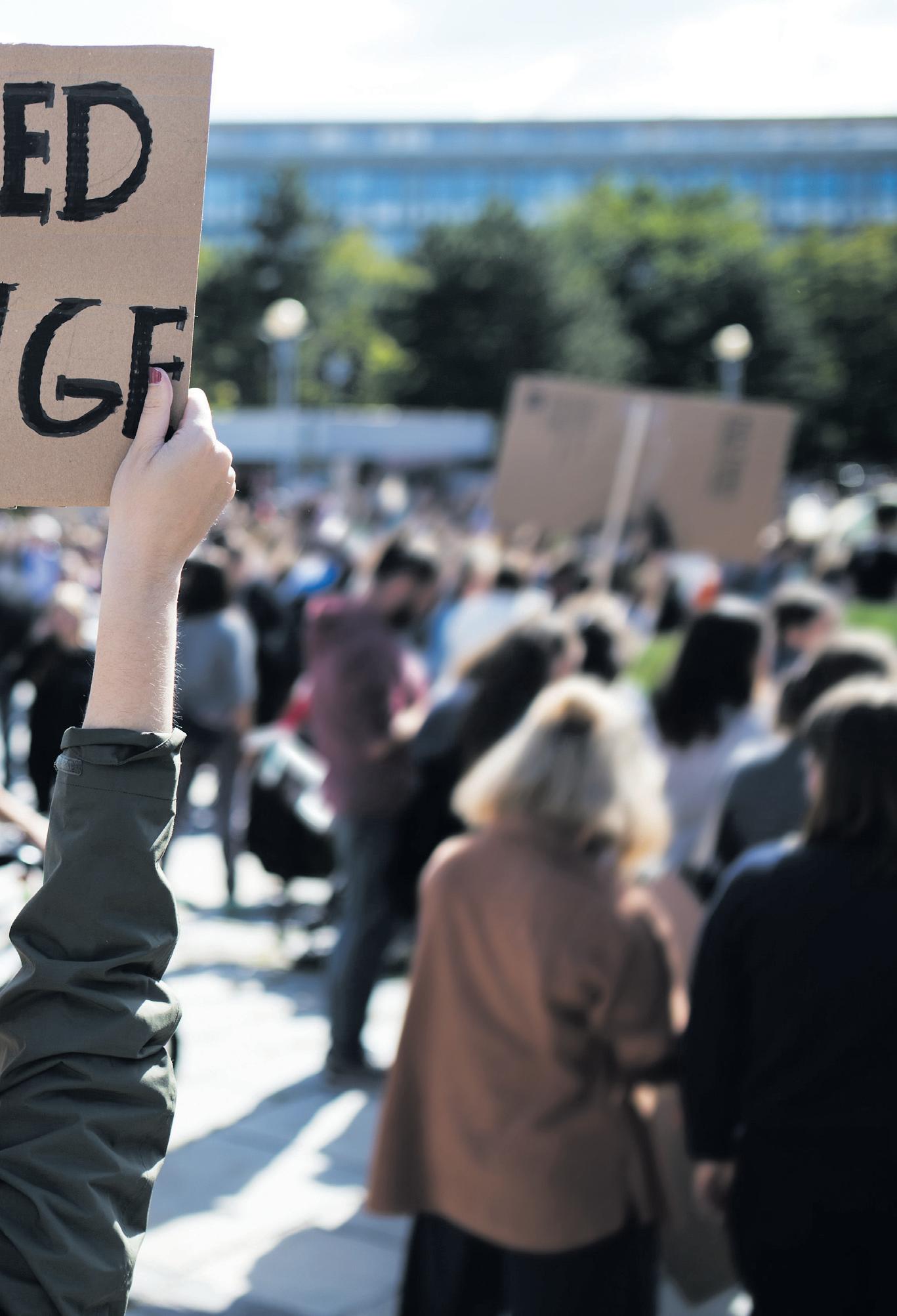
In the last few weeks, we’ve seen the transformation of Check the Register.ie into a voting application portal with features never previ ously available to Ireland’s voters, including the opportunity for six teen- and seventeen-year-olds to pre-register to vote.
Though slow off the mark, the ad vertising campaign for this ‘new’ site has come to involve not only television and social media adver tising campaigns but also posters in bus shelters and train stations to maximise the reach of this gamechanging shift in the business of cit izenship in Ireland.
We won’t see the effects of this change until the next elections, but should the new voting portal be a success, the State may recognise the power of its online presence to engage its more digitally-inclined citizens.
Cathal Murray is pursuing a Masters in Global Media and Communications at the University of Galway. He is passionate about music, popular culture, and electoral politics. Cathal can also be found bartending, talking to his houseplants, or watching retro Eurovision.
Diversity in Irish media matters. Reflecting more diversity – including race, gender, culture, and other marginalised groups or underrepresented communities – gives a voice to the otherwise voiceless.
In a survey conducted by Core in 2020, 47 per cent of re spondents said their ethnicity or nationality wasn’t represented in the media.
Foreign nationals make up over 750,000 of our population. Therefore, evidently, there is much room for improvement.
Dr Anne O’Brien, a Media Studies lecturer at Maynooth University, said that a “diversity change in Irish film and TV work must be audited” in a re cent publication for the Broad casting Association of Ireland.
“It is clear that diversity on screen is only created authenti cally and sustainably when there is diversity behind the
scenes,” said Dr O’Brien. She said that representation in the media could only be achieved if there was representation on both sides of the camera.
Thankfully, there is a positive progression in this area of rep resentation. In 2019, the Broad casting Association of Ireland funded the Media Research Fund Scheme.
This research aims to support the research initiatives of diver sity integration in the Irish media and has been working in conjunction with the RTÉ and DCU.
Broadcasters and media pro fessionals from various ethnic and diverse backgrounds have been allocated €56,318 to carry out productions of cultural sig nificance.
Dr O’Brien said that these productions aim to have people with different ethnic, racial, and cultural identities both in front and behind the camera.
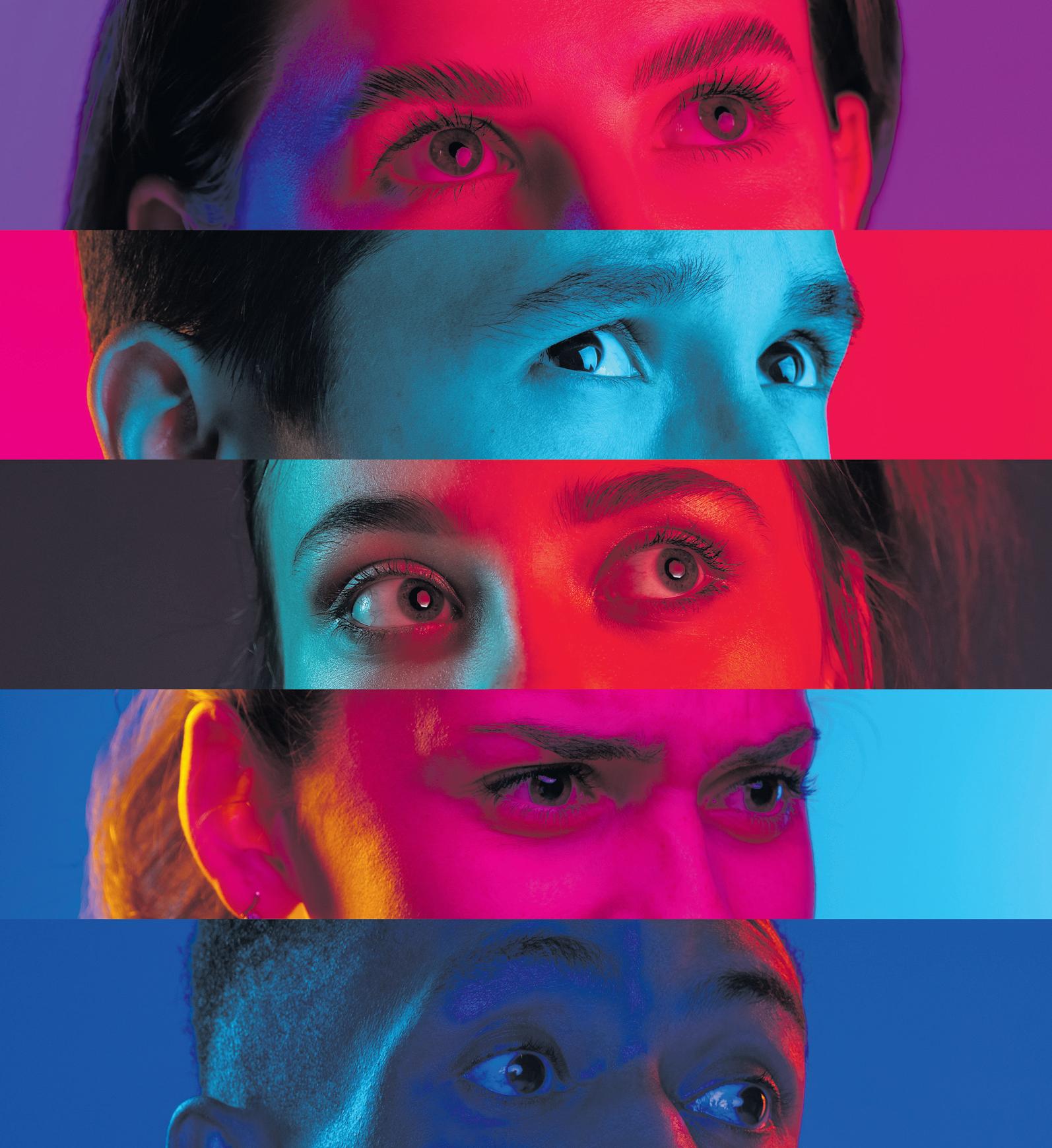
Opportunities for immigrants in the media take time to de velop. Diversity funding schemes allow their voices to be heard nationally, benefiting the
artists and the country’s cul tural landscape. Research fund ing programmes like this are not only helpful but essential.
Ryan Coyle is a MA student studying Global Media and Communications in the University of Galway. Ryan has recnetly recieved his BA in English and Sociological & Political studies. Ryan has a strong interest in writing and hopes to persue a career in producing social media and digital technology.
